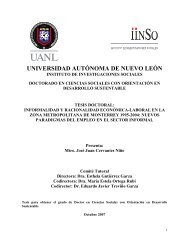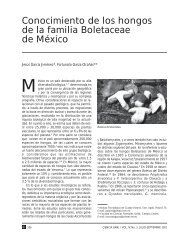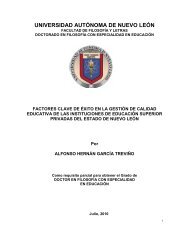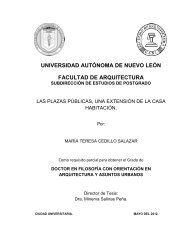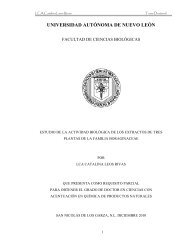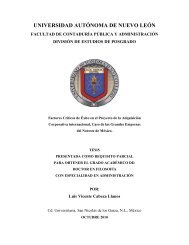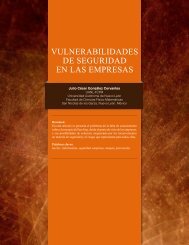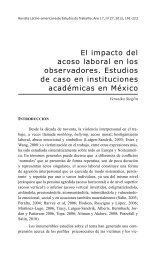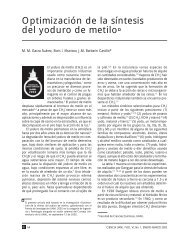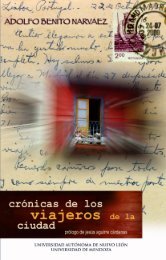Download (5Mb) - Repositorio Institucional UANL - Universidad ...
Download (5Mb) - Repositorio Institucional UANL - Universidad ...
Download (5Mb) - Repositorio Institucional UANL - Universidad ...
- No tags were found...
You also want an ePaper? Increase the reach of your titles
YUMPU automatically turns print PDFs into web optimized ePapers that Google loves.
1. ABSTRACT<br />
The free radicals (FRS) result from cell metabolism as well as from<br />
extracellular processes. FRS exerts some functions necessary for cell homeostasis<br />
maintenance. When produced in excess they can damage to the DNA which has been<br />
implied in mutagenesis and carcinogenesis. Scientific studies suggest that many<br />
dietary phytochemicals may play important roles as chemopreventive agents in<br />
prevention of many diseases, including cancers.<br />
The purpose of this study was to realise an isolation directed to the<br />
identification of the antiradical and/or chemopreventive compounds of the<br />
methanolics extracts from Spirulina maxima and Hedeoma drummondii, in order to<br />
determine the antiradical activity was used the DPPH and ABTS reduction assays<br />
and the ferric reducing-antioxidant power (FRAP) assay, total phenolic and flavonoid<br />
content were determined too. The MeOH extract from H. drummondii showed the<br />
most efficient free radical scavenging effects. The assay-guided fractionation of the<br />
crude extract allowed the identification of three major active constituents identified<br />
as: chlorogenic, caffeic and rosmarinic acid.<br />
The antiproliferative activity from crude extracts of both species were<br />
examined in cancer cell lines of mama and cervix (MCF-7 and HeLa, respectively)<br />
and a normal cell line (Vero), all extracts showed selectivity against tumor cell lines,<br />
again, the methanolic extract of H. drummondii was the most active; the crude<br />
extract, polar fractions and antiradical compounds of these, exhibited significant<br />
cytotoxicity.<br />
The antigenotoxic effect of antiradicals compounds were investigated using<br />
the comet assay in precision cut hamster kidney slices. At non cytotoxic<br />
concentrations of the phenolics acids (PA) prevented the DNA damage induced by<br />
oxidative stress .<br />
In conclusion, the PA isolation from Hedeoma drummondii efficiently<br />
protects DNA against genotoxicity of HgCl 2 damage and inhibited the growth of<br />
cancer cell lines probed. The chemopreventive effects of PA it is may be relation<br />
whit your radicals scavenging capacity.<br />
2



